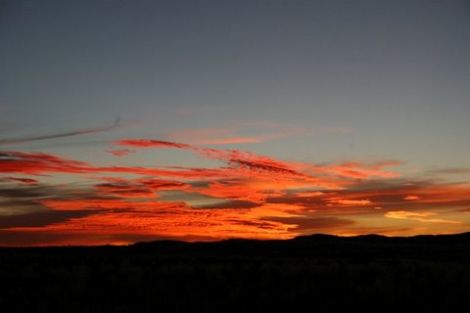
Note: This is a revised and edited response to mtdrift’s post here, including some thoughts on things to do should you ever find yourself in Windhoek, Namibia. Part 1 can be found here.
As the capital (and biggest city by a wide margin), Windhoek itself is a major port of entry into Namibia. It also happens to be a great place: medium-sized, pretty safe, traffic isn’t too bad/aggressive, and people are friendly and (justifiably, in my opinion) pretty proud of their country. It’s hilly and a lot of the houses are brightly painted.
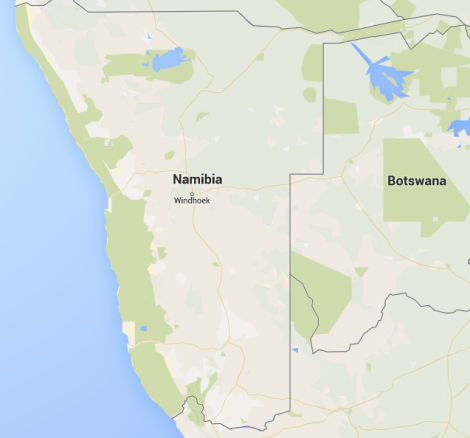
Windhoek is right in the center of the country, more or less equidistant from the desert frontier to the south and the safari country of the north, including Etosha National Park and the Okavango Delta.
If you find yourself in Windhoek for a little while, I recommend:
-Going to the Botanical Garden in Windhoek for part of the day. It’s got a really comprehensive set of Namibian plants (many of which aren’t found anywhere else) and it would be a good introduction to a lot of what you’ll see across the rest of the country. It’s not a roses-and-lilies kind of garden and if I remember correctly, it’s not (or barely) landscaped, so when the season is dry, the plants are dry. But a great introduction to what you are likely to see as you travel around.
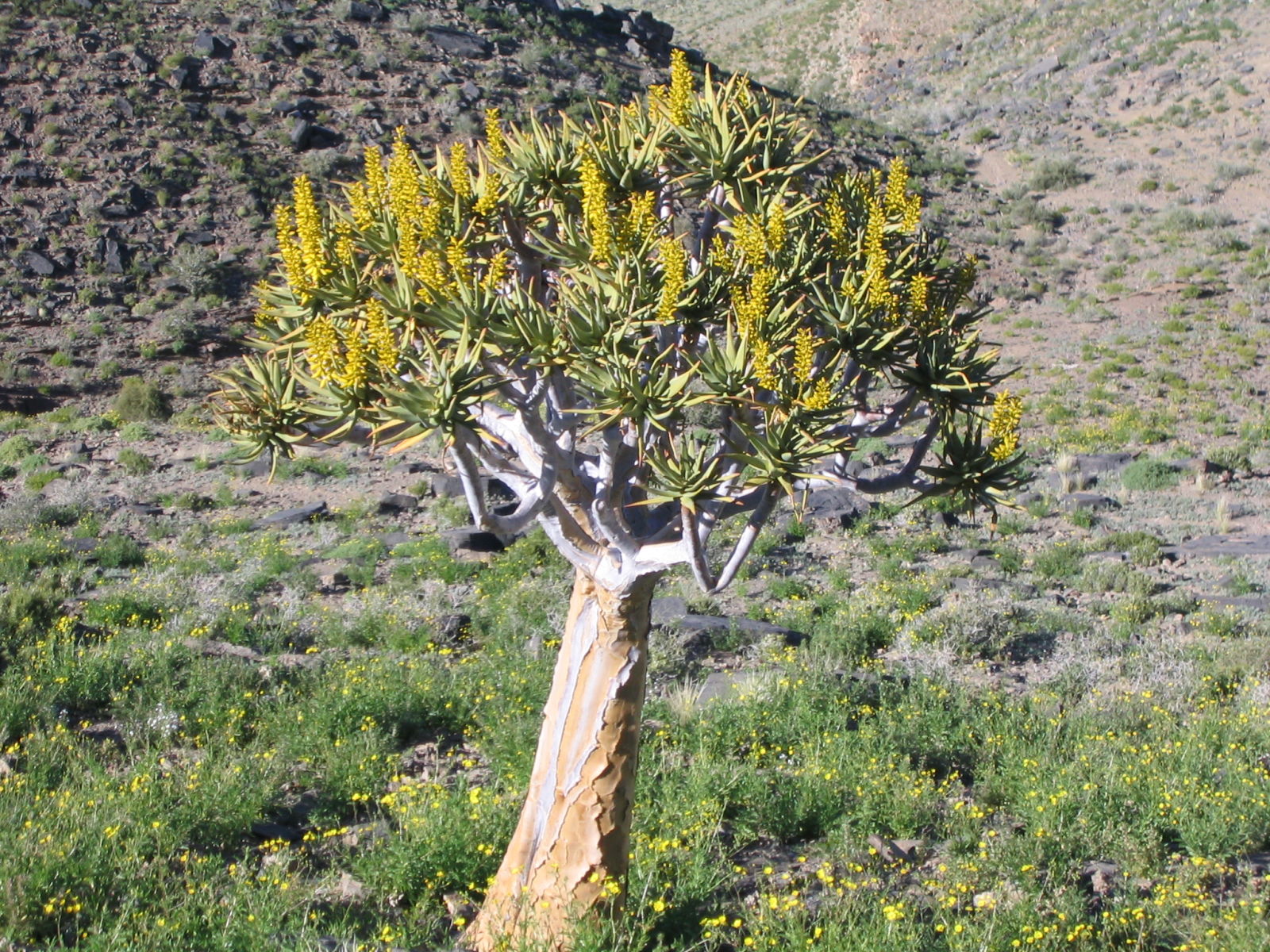
The kokerboom (Aloe dichotoma), a tree-sized aloe and a Namibian icon.
-Nearby, the Alte Feste and Owela Museum are good things to see if you want to know more about Namibia’s history*. The Alte Feste is the old German colonial fort and the Owela Museum has a lot of historical content. I would avoid the new “Independence Museum”–it was being built when I was there and it may not be fully complete. Rumor has it that it was constructed by North Koreans (?) and it has an unusual architecture. You can see some of it in a recorded broadcast here:
[Aside: pick up any nature/naturalist or history books that you find interesting in Windhoek. Many are put out by small presses in South Africa and are impossible (or $$$$) to find outside of the country. Believe me, I’ve tried!]
-Right near the center of town is the Post Street Mall, which is an indoor/outdoor mall with a lot of shopping. A lot of Namibian/South African brands and goods there (decent place for souvenirs).
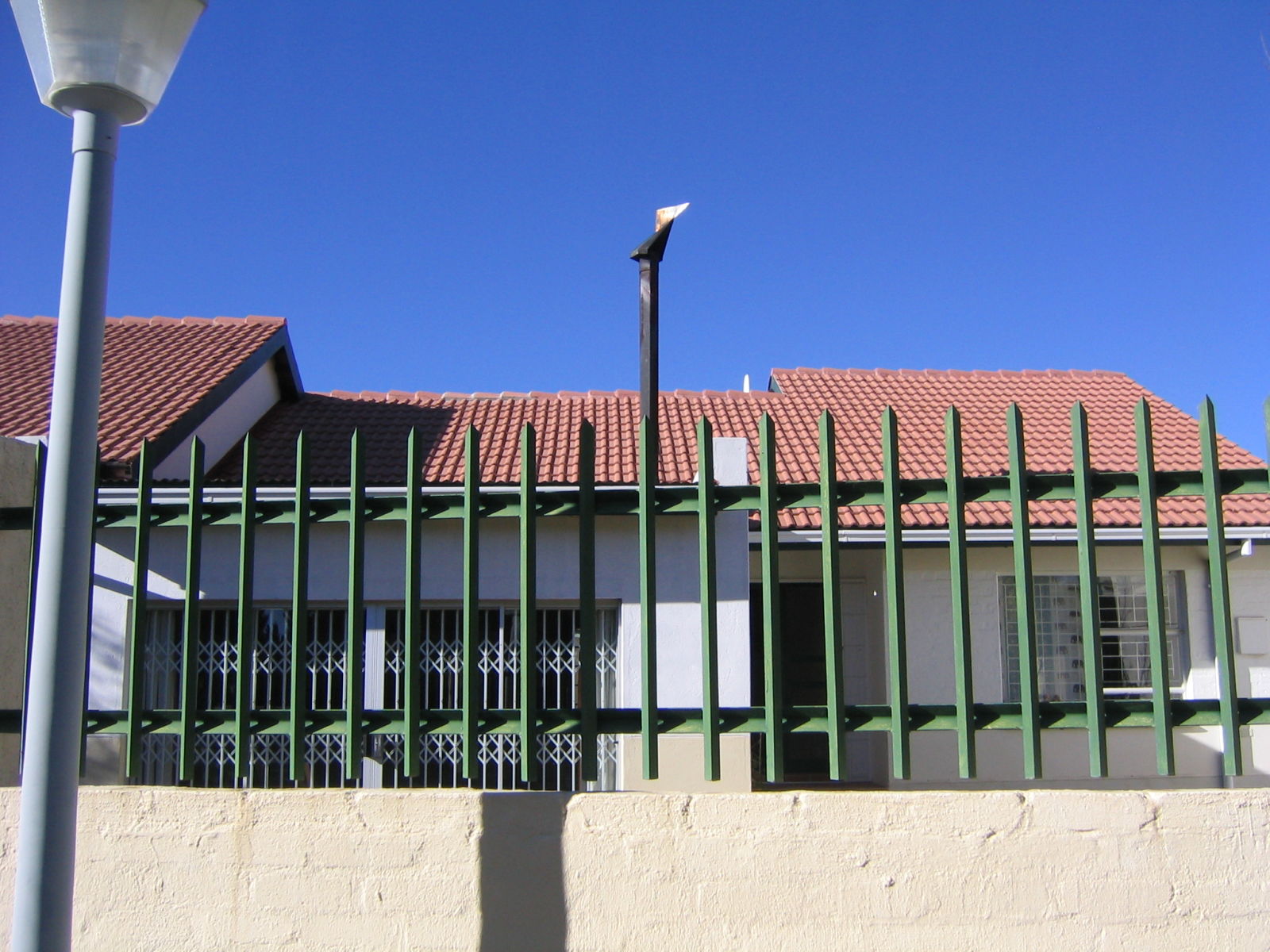
A typical house in Windhoek, with a small wall and fence around the yard.
-Food: You’ll find a lot of interesting game meats and good German-derived dishes around town. One famous place is Joe’s Beer House (joesbeerhouse.com) and you can eat all of your Namibian meats there. Highly recommend the kudu, oryx, and springbok, but zebra isn’t much to write home about.
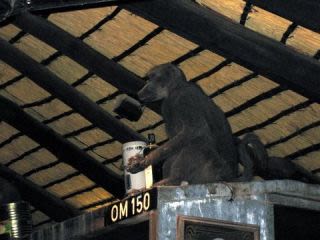
Joe’s’ decor is Crocodile Dundee/Heart of Darkness kitsch but it’s a Windhoek landmark.
Drink Windhoek Lager if you’re a beer drinker, or South African wine if you’re a wine drinker. (The great stuff never makes it overseas.) There’s a nearby cafe called Fresh N Wild which I’ve had friends tell me is quite good, too. O Portuga is really good for a sit-down meal (if memory serves) and there’s a neat place a little ways out of town called The Cicada Cafe which looks really nice, too. But bottom line...
-Use word of mouth. Ask everyone their opinions...cab drivers, bartenders, car rental agents, strangers at the bar. I found Namibians to be incredibly friendly and helpful, particularly if you like the country and compliment them on it. You may even be invited over to dinner by strangers, it’s been known to happen.
-Bargaining with street vendors: in Central Windhoek, you’ll find a lot of people selling small wares out on the street, including some beautiful wood products (bowls, etc.) Your mileage may vary, but I found that most things were so inexpensive, even factoring in their “tourist markup”, that I bargained a small amount to show respect and then paid >80-90% of their initial offer. (We’re talking handmade bowls or carved animals for ~US$5-10.) There are a lot of handmade goods for sale around the country and many people are quite poor, so my working assumption was that they could use the extra dollar or two.
-Safety: robberies are relatively rare in Windhoek (relative to Joburg, etc.) but can happen, so use the usual precautions. There are some street kids that will hit you up for money (unfortunately, they tend to single out women traveling alone or women in a group) and can sometimes be aggressive and invade your personal space, but they will back off if you are forceful.
*Short summary: lots of tribes were displaced to the area by stronger regional powers; Germany conquered the country during the expansionist Kaiser era and conducted one of the first industrialized genocidal programs against the Herero and other tribes; British Empire invaded from South Africa during WW1, took over, and interned people of German descent during WW2; more or less a protectorate/proxy-war battlefield for South Africa until independence in 1990.
When I get a chance, I’ll write up Part 3, looking at some other parts of the country, including the Namibian coast. Comments, suggestions, and questions are welcome